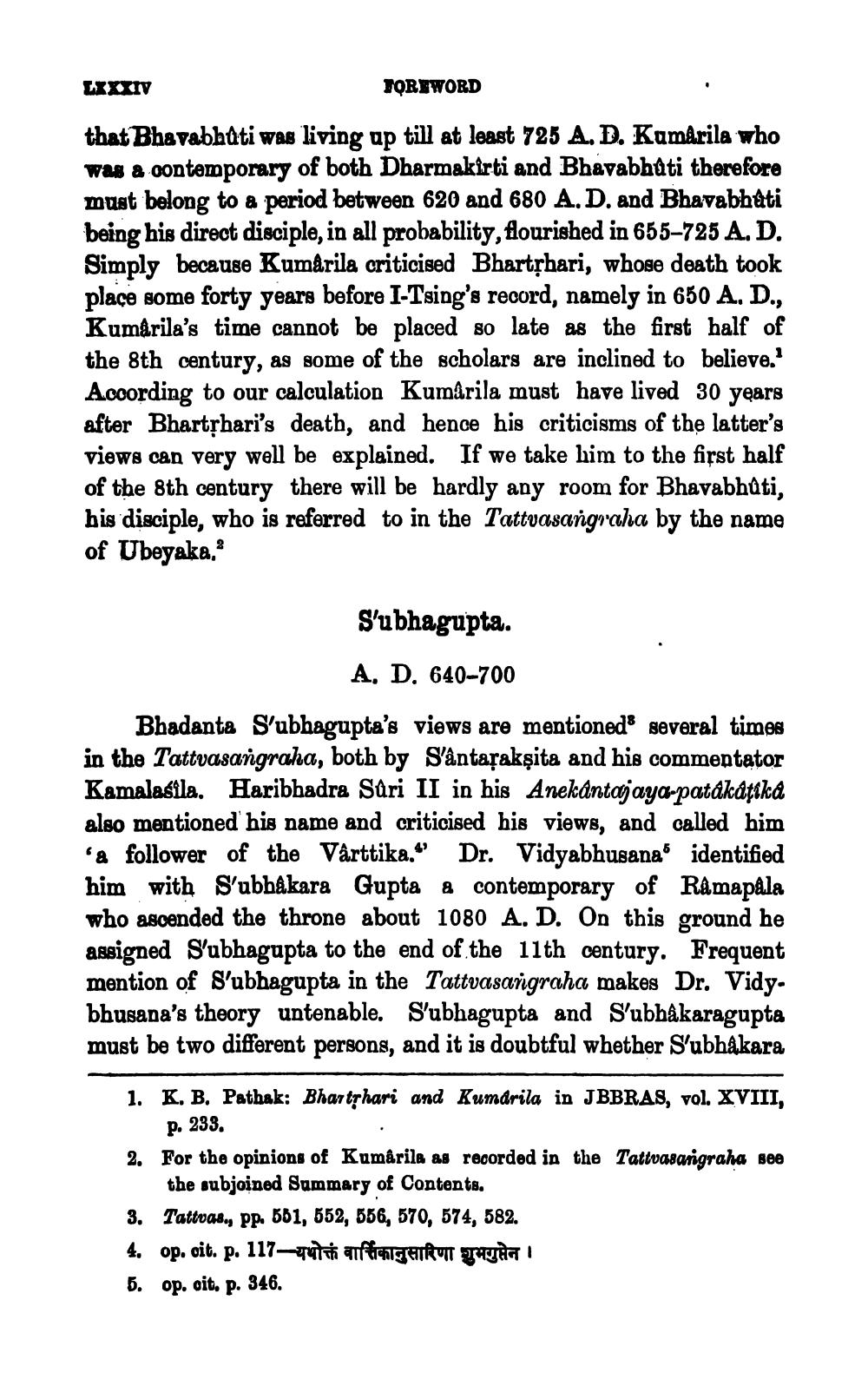________________
LXXXIV
TOREWORD
that Bhavabhati was living up till at least 725 A. D. Kumarila who was a contemporary of both Dharmakirti and Bhavabhūti therefore must belong to a period between 620 and 680 A.D. and Bhavabhati being his direct disciple, in all probability, flourished in 655–725 A, D. Simply because Kumârila criticised Bhartphari, whose death took place some forty years before I-Tsing's record, namely in 650 A. D., Kumärila's time cannot be placed so late as the first half of the 8th century, as some of the scholars are inclined to believe.' According to our calculation Kumarila must have lived 30 years after Bhartphari's death, and hence his criticisms of the latter's views can very well be explained. If we take him to the first half of the 8th century there will be hardly any room for Bhavabhūti, his disciple, who is referred to in the Tattvasangraha by the name of Ubeyaka.
S'ubhagupta.
A, D, 640-700 Bhadanta S'ubhagupta's views are mentioned several times in the Tattvasangraha, both by S'ântaşakşita and his commentator Kamalasila. Haribhadra Súri II in his Anekântajaya-patakatika also mentioned' his name and criticised his views, and called him
& follower of the Vårttika. Dr. Vidyabhusana identified him with S'ubhakara Gupta & contemporary of Ramapala who ascended the throne about 1080 A. D. On this ground he assigned Subhagupta to the end of the 11th century. Frequent mention of S'ubhagupta in the Tattvasangraha makes Dr. Vidy. bbusana's theory untenable. S'ubhagupta and S'ubhåkaragupta must be two different persons, and it is doubtful whether S'ubhakara
1. K. B. Pathak: Bhartyhari and Kumarila in JBBRAS, vol. XVIII,
p. 233. 2. For the opinions of Kumârile as recorded in the Tattvasangraha see
the subjoined Summary of Contents. 3. Tattvas, pp. 561, 552, 556, 570, 574, 582. 4. op. cit. p. 117— att faghikon Tauda 5. op. cit. p. 346.




